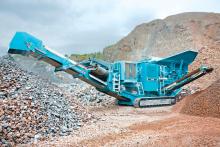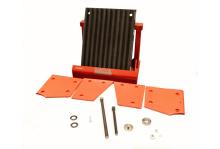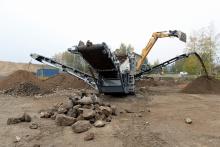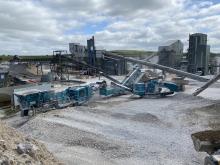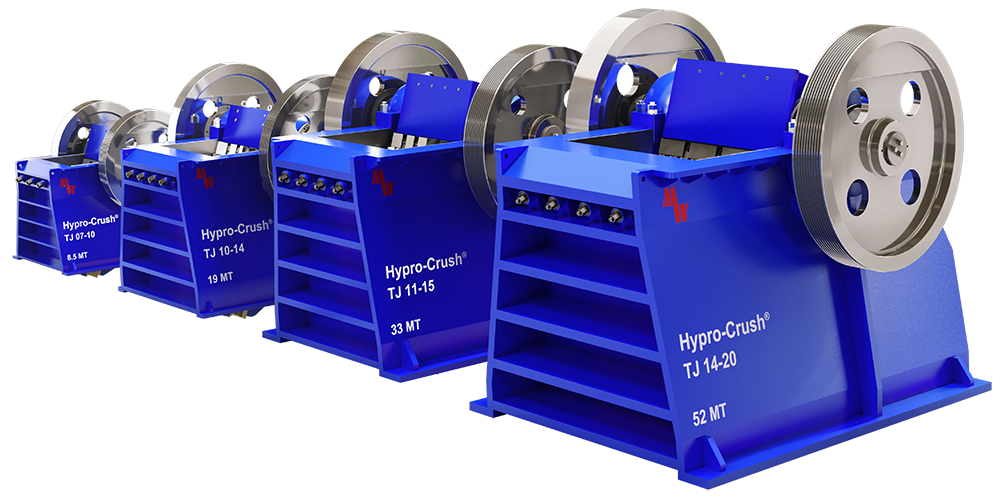
One of the most expensive and important crusher types is the primary jaw crusher, and where high capacity is required, primary gyratory crushers are key. Both types are generally seen in use throughout the world, with gyratory crushers selected by large quarries and mining operations. Although installation costs are often higher than their high purchase price and costly to operate, they have proved to be an essential item of equipment. In the main, the advantages of a jaw crusher make it essential due to its simplicity and ease of maintenance, with an effective installation cost making it a first-choice solution when it can reach desired capacity.
There has now been a real development concerning mineral processing: the new high-production jaw crusher Hypro-Crush. This new global patent application comprises six models for different feed sizes, all said by developer Moore Watson Mineral Processing (MWMP) to overcome the problems inherent with traditional crushers. Due to the Hypro-Crush’s unique design and construction, the first four range models are commonly used feed size models and cover the spectrum of the full jaw-crushing offering of major manufacturers. MWMP says this has been achieved by using a development that uses less power and weighs significantly less but still provides the productivity of established large crushers due to the unique designs.

In addition to static installations, the smaller size will revolutionise the development of mobile-tracked crushers. The key development is that the Hypro-Crush is much wider at the bottom than the top, thereby producing a highly efficient design providing the power to crush exactly where needed. In effect, the Hypro-Crush is said by MWMP to be a significantly smaller and lighter machine with similar production to traditional designs. For example, the Hypro-Crush TJ 10-14 is 1,000mm wide at the top and 1,400mm at the bottom and only weighs 19t but has, claims MWMP, the same productivity as a comparable 50t unit manufactured by leading established crusher companies. Furthermore, it only requires 110kW of installed power compared to 200kW of the respective traditional machine. Due to its smaller size, it requires a claimed 40% less power to start and run the machine, and technical calculations are said by MWMP to have shown that it will produce in four days what a traditional crusher will do in five or six days.
The exact production figures and kW requirement for each model will be available after further testing.
The Hypro-Crush essentially uses less of everything to produce the output of much larger crushers. As the Hypro-Crush is lighter and smaller, it uses less metal to manufacture, less power to operate, less power to build, and less power to run – in fact, less of everything. CO2 emissions are significantly reduced both in operations and manufacturing. Due to the ability to run at a small CSS (closed side setting) without a loss in production, the possibility also exists to remove a secondary cone from the production process resulting in less outlay. This delivers a major environmental and productivity improvement as it goes a long way in helping to preserve the world’s fast-diminishing resources, stresses MWMP.
Production is said by MWMP to at least match traditional larger jaw crushers (or exceeds at a narrow CSS) and is maintained due to the wider exit for material at the bottom of the crusher. The top feed opening dimensions allow a smaller CSS to be set. It further enables a wider range of CSS to be used effectively. The Hypro-Crush unique convex-design wear plates have a ‘belly’ which will spread the material across the crushing chamber to utilise the full width of the lower jaws. A lip on the fixed jaw plate holds the material while being crushed and pushed through by the stroke and lip on the swing jaw plate. Tapered grooves located on the crushing wear plates are significantly wider at the bottom than at the top to greatly assist in material flow.
The new design has been conceived based on more than sixty years of hands-on global experience in crushing operations by Nicky Watson, who has been at the forefront of crushing operations for more than half a century, and still is. His know-how has led to the Hypro-Crush. This utilises many tried and tested features but with a design geometry which expands the crushing path where it is needed most, thereby increasing crushing capacity without changing the reduction ratio or increasing power requirements. Power savings can be made for a given operation by selecting a smaller, lighter (and therefore cheaper) machine for the same operation.
To deliver the world’s infrastructure, sustainable solutions must be developed. MWMP says the Hypro-Crush has been developed to “transform” static and mobile crushing installations and is designed to provide sustainability in the mineral-processing industry. The company says that Hypro-Crush goes a long way in helping the mineral-processing industry meet sustainable and environmental targets by being more efficient and productive while requiring “less of everything”. The Hypro-Crush is such a claimed revolutionary development that it is said by MWMP to effectively outperform all traditional jaw crushers. AB
Moore Watson Mineral Processing
The Hypro-Crush has been developed as a result of more than sixty years of industry experience by Nicky Watson. Watson has been involved in the mineral extraction and processing industry as a consultant, design engineer, manufacturer and distributor to some of the world’s leading quarries and mines. In the mid-1980s, he and his business partner (Gordon Fletcher) developed the first Extra Heavy-Duty Trommel Screen originally designed to remove clay from large limestone rocks in Derbyshire, central England. It was exhibited at the Hillhead show and featured on BBC’s Tomorrow’s World TV programme in the UK. These Extra Heavy-Duty Trommel Screens that are still working today at some of the world’s largest open-cast mines and quarries have been instrumental in the development of some of the most important mineral-processing advances during this time.
The Hypro-Crush is the culmination of a lifetime of work dealing with the requirements of the people on the front line. Even now, leading quarrying and mining companies retain Watson to advise them on how to get the most out of their investment. The Hypro-Crush is now ready to enter the manufacturing stage. Moore Watson is a well-known name in the industry, and many have experienced its expertise. The company acts as an OEM for some of the leading manufacturers of crushing equipment worldwide and provides bespoke installations globally.


